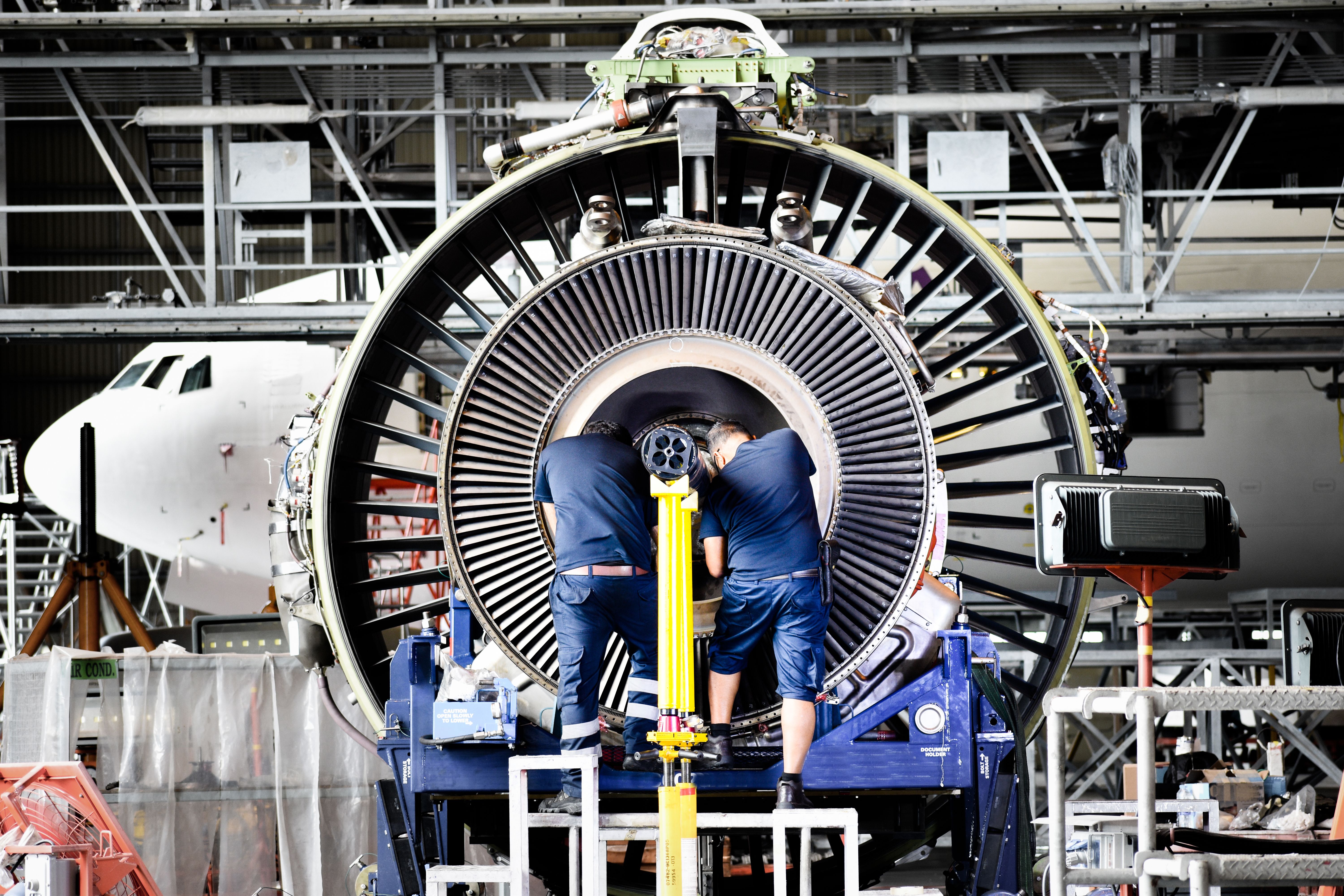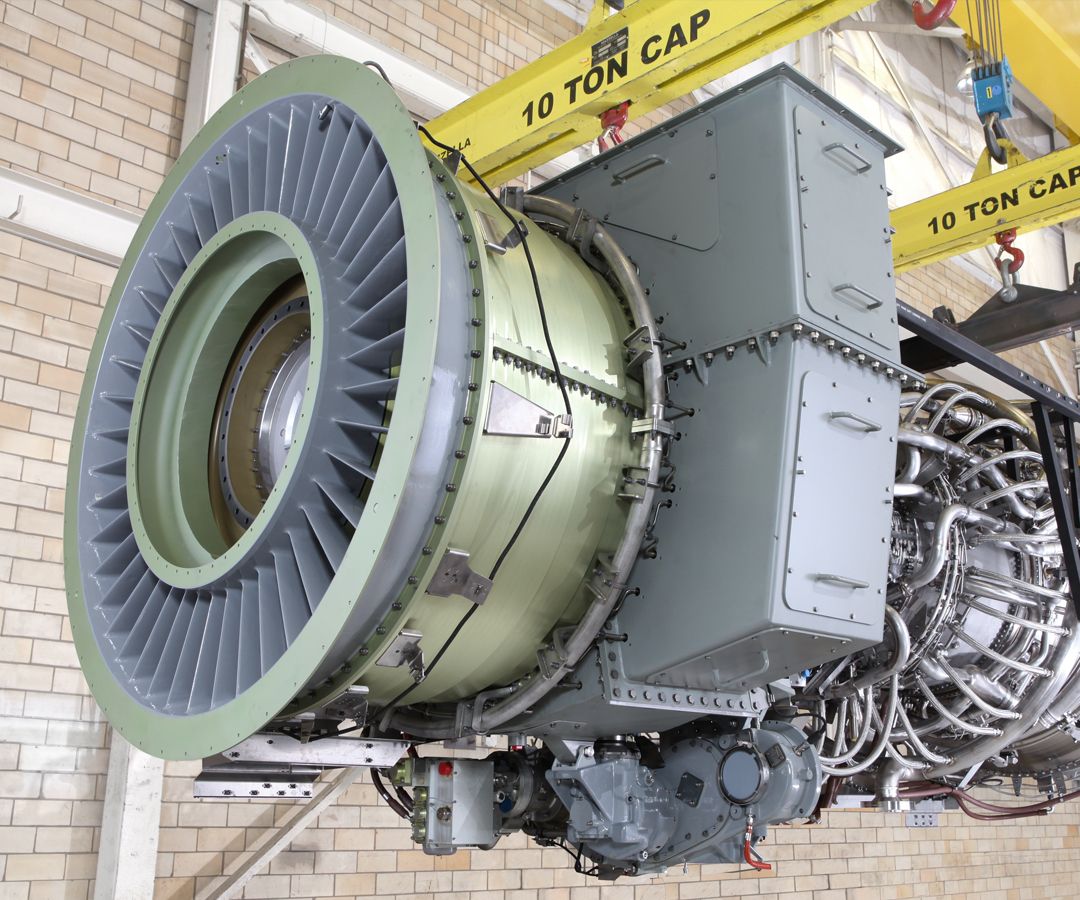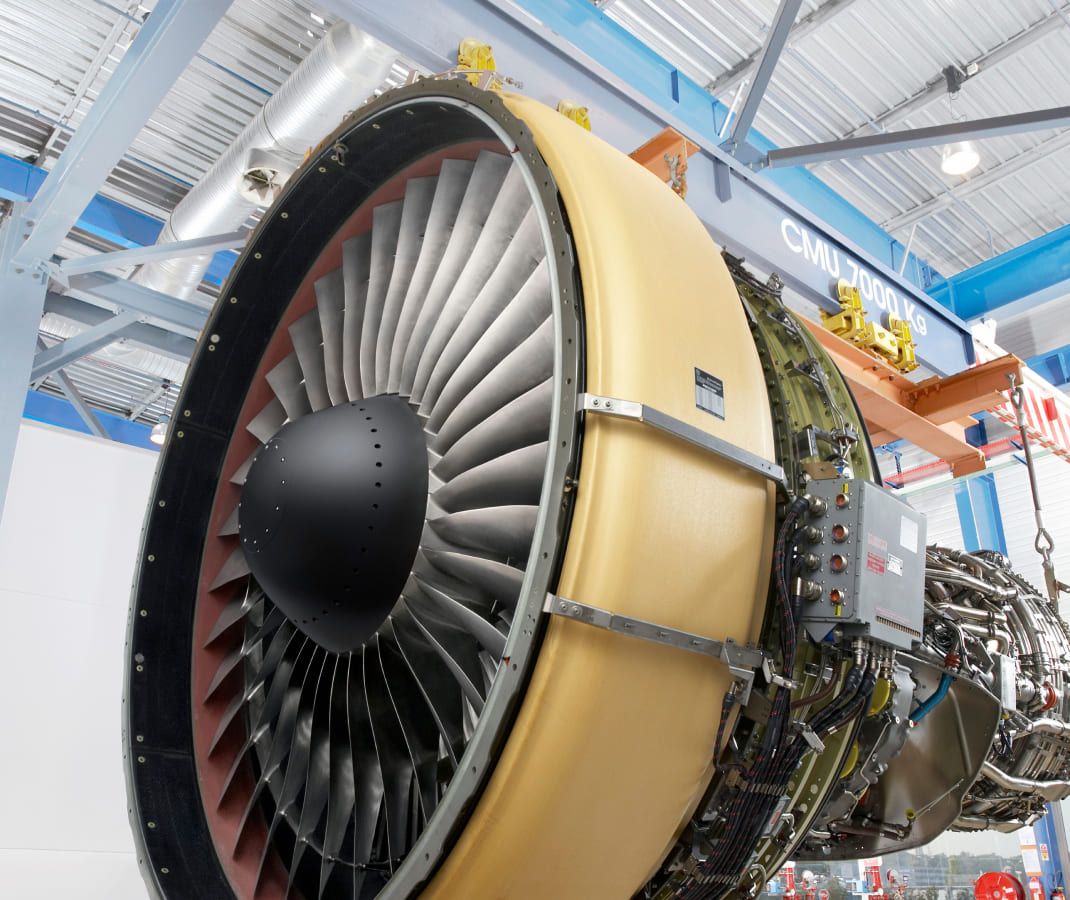Gas turbines work on the principles of compression, combustion, and expansion. The incoming air passes through a series of compressor stages (blades and vanes), where the air is compressed. As the air velocity decreases, the pressure and temperature of the air increase.
The compressed air is mixed with pressurized fuel (or gas) and ignited in the combustion chamber. The hot gasses expand and pass through a series of turbine stages (blades and vanes) before exiting through the exhaust. During the process, the exit velocity becomes more significant than the free-stream velocity, which generates thrust and propels the engine (and the aircraft) forward.
Gas turbine engines can be used for industrial power generation and for generating thrust to propel aircraft through the air. Both industrial gas turbines (IGTs) and their aero derivatives are similar in working principle and functionality. However, there are some specific operational differences
Structural design
Some IGTs may have a single-shaft design instead of the standard two-shaft design on the aero engines. However, the geometry and overall structure may be identical in the two designs. For example, the part numbers on the turbine case, rear frame, and combustor case are the same for the General Electric (GE) J79, the aero-derivative of the GE LM1500 IGT.
The J79 is an axial-flow turbojet engine built for several fighter and bomber aircraft. The LM1500 is the turboshaft counterpart to the J79, used for land and marine applications. It is noteworthy that the OEM may limit service providers, including MROs (maintenance, repair and overhaulers), to exchange parts between the two types. This is typically done to control (and independently cater to) different markets.
Modular sections
The combustor is one of the design modules that may differ due to different performance requirements between the two types. Aero engines produce thrust by burning fuel and air mixture. Hence they require shorter, annular combustors. Aero engines are lighter and more compact to minimize total drag in flight.
The IGTs typically use natural gas for power generation and require much larger can-type combustors. The bulkier can-type combustors are heavier but control emissions better and are more accessible to service.
The number and location of the accessories may also differ between the two types. For example, an aero-derivative will have all required accessories in one system. On the other hand, some accessories on the IGTs may be part of a separate system on the ground.
Performance
The performance of aero-derivative gas turbines is based on the thrust-to-weight ratio. Moreover, depending on the phase of flight, such engines run at varying speeds within the flight envelope. IGTs do not have to be weight-limited and typically run at a single speed for more extended periods.
Operational cycle and life
The aero-engines have a much shorter cycle time than IGTs. A typical widebody engine has an average cycle time of seven hours. While the maximum cycle time for aero engines may be nearly 24 hours (on ultra-long-haul flights), it is significantly lower than the IGTs. IGTs typically run for thousands of hours on one cycle.
For example, it is common for the GE LM6000 IGT to run non-stop for 30,000 hours. The aero engines’ operating life is shorter and requires higher maintenance. With bulkier designs, heavier parts, and minimal wear, IGTs may last much longer.
What do you think about the differences between IGTs and their aero derivatives? Tell us in the comments section.



